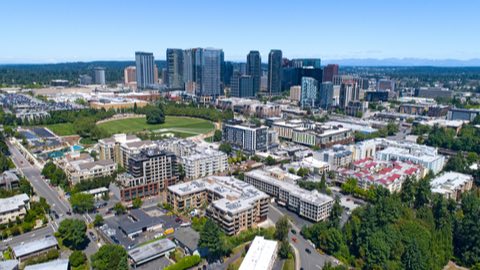
The city of Bellevue, WA has completed its traffic study – Video-based Network-wide Conflict and Speed Analysis to Support Vision Zero in Bellevue (WA) United States – in a bid to reduce traffic fatalities. Approximately 4,500 hours of video footage was recorded at 40 intersections to collect data regarding near-miss accidents and speeding.
“By measuring vulnerable road user safety at-scale, in ways that weren’t possible even a few years ago, we’re making the invisible visible and giving city leaders foundations to make data-driven decisions around infrastructure and safety,” said Noah Budnick, senior director for programs and operations at Together for Safer Roads.
The analysis of the video data will help guide city policies related to biking and pedestrian infrastructure – as well as signage and other street improvements.
“I think the main policy discussion will come when budget proposals are considered later this year. There are specific proposals for new pedestrian and bicycle infrastructure,” David Grant, public information officer for the Bellevue Transportation Department, explained. “The study will help us identify and prioritize projects on the ground.”
Findings from the Video-based Network-wide Conflict and Speed Analysis to Support Vision Zero in Bellevue study include:
- 38% of crash causes can be explained by a combination of road user volume and conflict data;
- motorcyclists traveled at higher speeds and generated more critical conflicts than any other road user;
- cyclists made up 0.1% of observed road users, with motorists accounting for 97.3% and pedestrians 2.6% ; and,
- more than 10 percent of drivers were speeding – half of those in excess of 11 mph over the posted speed limit.